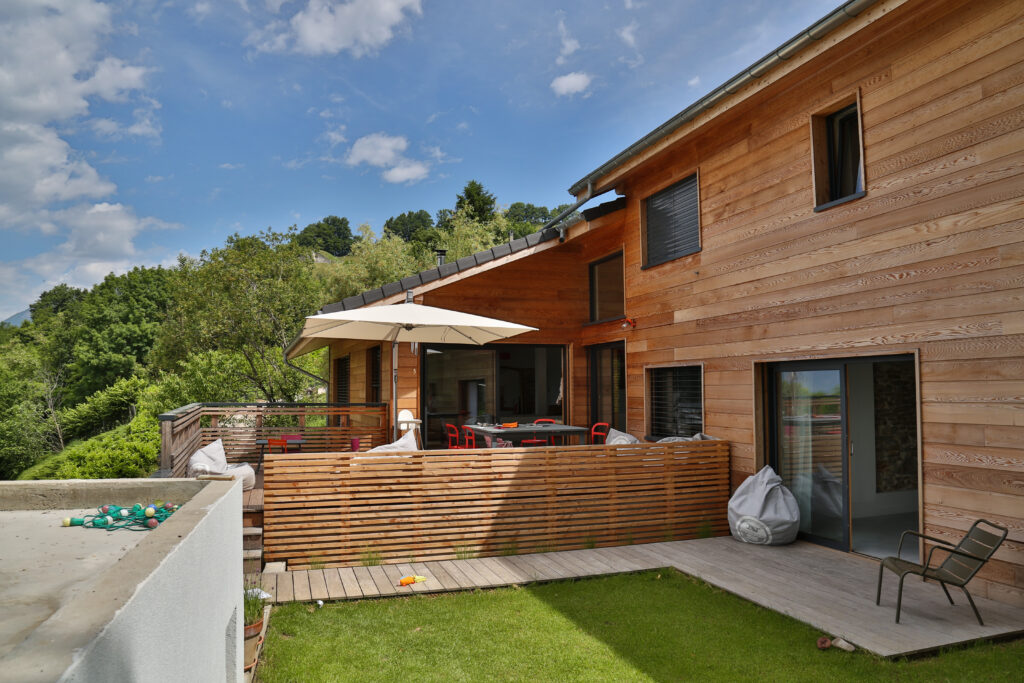The trend towards eco-friendly facade cladding, particularly with a preference for minimally processed and untreated wood, continues to grow. Wood, in all its forms, is reclaiming its rightful place in construction, becoming increasingly popular due to its exceptional durability and aesthetic qualities. Choosing naturally resistant wood species ensures not only the longevity of your facade’s appearance but also an environmentally responsible approach without resorting to harmful chemical treatments.

Choosing the right wood
The selection of wood for facade cladding is crucial for both durability and aesthetics. Here are some popular options:
Douglas fir
Douglas fir is often a starting point for wooden cladding due to its durability, with an estimated lifespan of 50 to 100 years. However, it’s important to note that Douglas fir can be knotty, which might affect its longevity. Although it starts off with a pinkish hue, its aging process is less uniform compared to other softwoods and is prone to splitting during wet and dry cycles.
Larch
Larch offers a great balance of aesthetics and resilience. Its uniform aging process results in an attractive silver-grey patina without any significant deterioration. The main drawback of larch is the potential for resin pockets that can leak onto the facade. Selecting the right boards and avoiding pieces close to the tree’s heart can mitigate this issue.
Red cedar
Regarded as a premium option, red cedar is known for its uniform aging, stability, and lack of knots, ensuring a perfect seal. However, as red cedar is sourced from North American forests, its transportation to Europe increases its carbon footprint.
Maintenance of wood cladding
Wood cladding will inevitably undergo changes in color due to environmental factors. Regular maintenance using water-based saturators can be effective but is often costly and challenging for high facades. Natural oils like linseed oil are not recommended for outdoor use as they can rot, leading to unattractive black spots.
Painting options
Some homeowners opt for painting their wood cladding to maintain color stability. Using natural pigments and iron oxide-based paints can give your cladding a warm hue, but it’s best applied on lower facades for easy touch-ups.
Burnt wood cladding
Burnt wood cladding is a 100% natural method to enhance the durability of wood. The charring process creates a protective layer that makes the wood resistant to insects and decay. This technique also reduces the wood’s sensitivity to moisture and extends its lifespan.
In conclusion, selecting the right wood for your facade cladding involves considering factors like durability, aesthetics, maintenance, and environmental impact. While each wood type has its advantages and drawbacks, choosing responsibly sourced wood and following proper maintenance practices can ensure your facade remains beautiful and sustainable for years to come.

 Open Immovlan
Open Immovlan